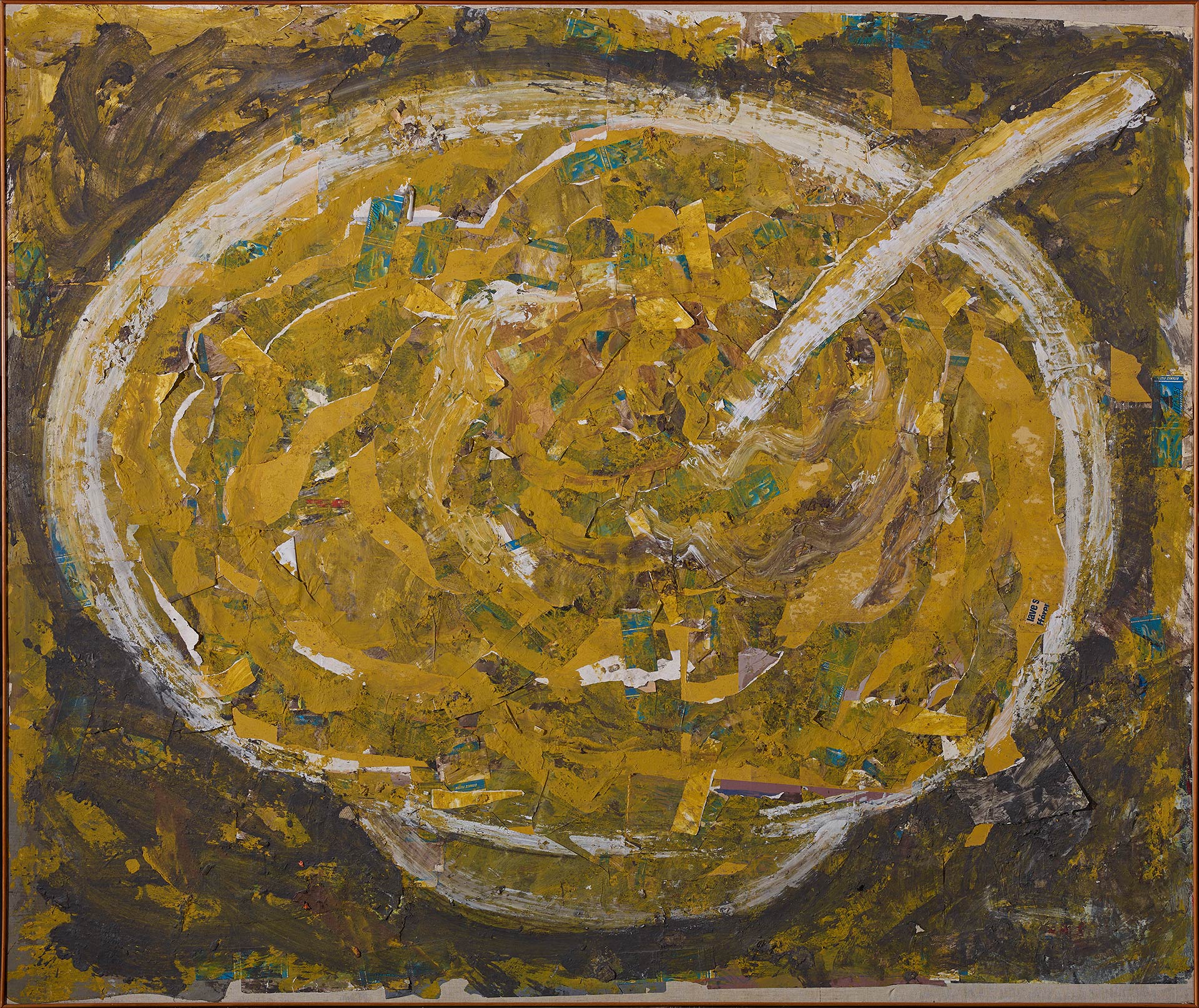
Miquel Barceló (Felanitx, Mallorca, 1957)
French Soup
1983
WORK INFORMATION
Oil and collage on canvas, 220 × 270 cm
The dawn of the 1980s witnessed the rise of a generation of young Spanish artists driven by the new momentum of the country's recent transition to democracy. The decade brought the reinstatement of freedoms suppressed during the dictatorship, and painting—as occurred in other European and American countries—reclaimed its position at the forefront of the international art world. The new painting of the 1980s demanded freedom to dialogue with art history and the avant-garde movements, and painters embraced Neo-Expressionist, neoclassical or neo-Pop languages at a time of ebullient international activity marked by major exhibitions, biennials and documentas. It was in this context that the aforementioned generation of artists—including Miquel Barceló—came to the fore in Spain.
After making his first trips to Paris and experiencing American Abstract Expressionism at first-hand, in 1981 Barceló exhibited his first zoomorphic figurations at a show in Madrid that attracted considerable publicity. As a result, he was "discovered" and invited to participate in the next Kassel Documenta and a long list of exhibitions in Spain and abroad. Baroque painting and the masters at the Museo del Prado were also among his early influences, as the artist confessed in a lecture entitled "Pradoxismo" given in 1991: "I return to the Prado like an animal to the trough or an insect to the puddle; I drink from these dense, dark, nourishing waters and contemplate my dancing reflection on the impassively serene faces of these saints, kings and virgins who are paint and perhaps were never more than paint."
Soupe française [French Soup] illustrates this revised Baroque inspiration, for the dish with its spoon immersed in the ochre magma of the soup is ultimately a nod to Baroque still-life tradition, but with an absolutely contemporary treatment of coloured textures and pasted bits of paper. This soup dish also recalls the earth tones and impastos of Dubuffet, Fautrier and Tàpies, important points of reference for the Mallorcan painter. The soup in which various types of foods are combined is a metaphor for painting itself, according to Barceló: like cooking, painting is an act of transformation in which the process partly determines the results.
Le dîner sur la mer [Dinner by the Sea] dates from a time when Barceló was already on the path to international stardom, having been invited to participate in several major events, including the Aperto section at the Venice Biennale that same year. The Neo-Expressionist dimension of his painting is patent in the thick, impetuously applied paint. The turbulent trajectory of colour curls into loops and currents beneath the strong red lines that delimit the contours of a table. Barceló's relationship with matter is marked by his boundless imagination, which turns the act of painting into an organic manifestation of life and the paint into an intense gesture of colour on the verge of overflowing. [Carmen Bernárdez]

